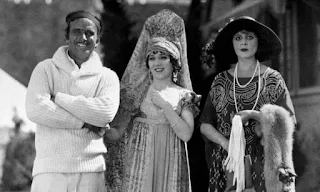The part about parties
The party existed in the 19th century. Go to, say, the Chicago Tribune society page and read this, from 28 January 1877:
“A social event which will long be remembered by those who were so fortunate as to participate occurred Frida evening at the residence of Mrs. Whitman, no. 1777 Wabash avenue. The compliments and best wishes of the party were tendered to Mr. and Mrs. Ed Sturtevant, whose appreciation of the “surprise” was made manifest during an entire evening of unmingled entertainment.”
These social events were often “functions” based around some purpose, but as the Whitmans and the Sturtevants could testify, they often involved unexpected visitors, drinking and fiddle playing. As the gilded age got ever more gilded, among the New York millionaire set parties became essential monuments of conspicuous consumption, running rampant through show girls and ice sculptures.
But I would contend that it was technology – notably the phonograph and the radio – that really goosed the twentieth century party into existence. Its democratization, its youth, adventurousness, dancing,music and hip flasks really came together in the twenties, les années folles, any account of which must be an account, in part, of parties. The novels of the twenties bear ample witness: Tender is the Night, Vile Bodies, the Unpossessed, Party-Going, Mrs. Dalloway, and even Women in Love – set in the boho set that was all proto-twenties – require parties as organizing plot elements. They are as it were correlates of the plot itself. In Proust or Musil, on the other hand, the freewheeling party element is subordinate to the banquet or function principle. Here, conversation in the clubbish sense tracks the event. They lack the pot-luck aura of the Anglo-American scene. Once never has the sense that the Guermantes are ever going to jump up and jitterbug.
The other great party decade, I think, is the sixties, that cousin to the twenties. One of the social events of the decade was Truman Capote’s masked ball, an appropriately camp event that Delillo shrewdly used as an important symbol of Cold War culture – and its coming apart – in Underworld. Of course, Delillo had long been a party writer – parties are key to, say, Running Dog, at the center of which is a film of a mythical party/orgy in Hitler’s bunker – an apocalypse party.
Looking over the party-strewn sweep of my own existence in the 20th and 21st centuries, the patter is predictably middle class. Between the 20s up to the late 30s, parties were “adventures” in Georg Simmel’s sense, intersections between the real life and the dream life. – or nightmare life, depending on the depth of disaster into which the party descended. The parties I went to or, more rarely, gave were about dancing, drinking and taking drugs. Conversation was very un-Musil like, shouted over the music into ears. The development of a thought, in the party, was always in the service of a joke, a come-on, or a personal argument. These parties were often heralded by invites, but the invites were labored over to make them seem like parodies of invites. This was because the party mocked the ritual of a party, of the type that is so organized that people are invited to it. Most of the best parties definitely attracted a number of non-invitees, which, in certain of the most out of control ones, were people in trouble. These parties built up their multi-cellular, mutant structure without any center. Breakups and hookups were party phenomena. After the thirties, in my muddle passage, parties are no longer adventures, and are no longer meant to be. The Covid age has definitely been a giant blow to parties, and I have a vague sense of depressed youth around me – although I expect parties to become much wilder for the youth in the next coupla years. Out of self-defense, we have gone out to few parties lately. The ones we have gone to for the past several years are almost always adult afterparties of children’s parties or wedding receptions. The soundtrack of the former is all chatter – no music plays, even in the background. The latter are the last remnant of a vast archipelago, in my life, of dancing. I loved to dance when I was a younger man – it was an important part of growing up, emotionally, for me – but I am less tolerant, I suppose, of looking ridiculous. Apparently in the States, the 20 something bourgeoisie can no longer get married without first boarding a party bus in Nashville and leaving behind a trail of to-go cups with a little vodka in the bottom of them, in which a few cigarette butts float. I don’t know if this is a happy or sad thing, really.
The party novel has recently reappeared – to good examples are Sally Rooney’s Conversations with Friends and Rachel Kushner’s Flamethrowers, although in Kushner the parties are nostalgic curiosa from the 70s art scene. In my case, my parties have miniaturized themselveves into scattered bits of prose, full of cod-learning, such as one might hear from a bore at a party, shouted into your ear.
“‘Oh, Nina, what a lot of parties.’
(. . . Masked parties, Savage parties, Victorian parties, Greek parties, Wild West parties, Russian parties, Circus parties, parties where one had to dress as somebody else, almost naked parties in St John’s Wood, parties in flats and studios and houses and ships and hotels and night clubs, in windmills and swimming baths, tea parties at school where one ate muffins and meringues and tinned crab, parties at Oxford where one drank brown sherry and smoked Turkish cigarettes, dull dances in London and comic dances in Scotland and disgusting dances in Paris—all that succession and repetition of massed humanity. . . . Those vile bodies . . .)”



No comments:
Post a Comment